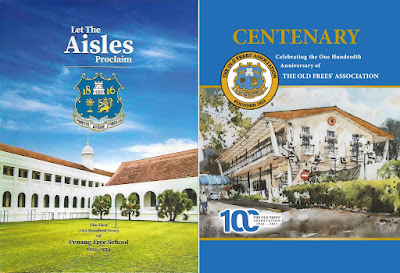There's this interesting case which I discovered in yesterday's online version of The Star newspaper. My friends would know that I have a deep interest in estate planning, and this story is about the Singapore High Court allowing a Trustee to recoup money wrongly paid out to the beneficiaries of a Trust.
What happened was that for nearly two decades, numerous descendants of a wealthy Arab trader in Singapore had been receiving more money from the family trust than they were entitled to, while others received less. The trust was set up by a Yemen-born trader, Shaik Sallim Talib, who made his fortune in Indonesia before settling in Singapore. Following his death in 1937, income from his extensive property portfolio continued to be distributed among his descendants.
The trust had been managed by British and Malayan Trustees since 1989, and one of the properties in question was the Treetops Executive Residences on Orange Grove Road. From November 2001 to November 2019, income was distributed incorrectly due to a misinterpretation of the trust’s terms. This resulted in some beneficiaries being overpaid and others underpaid, with disputes arising over S$1.46 million in erroneous distributions prior to May 2014.
On 16 July 2024, High Court Judge Hri Kumar Nair ruled that the trustee could recover the overpayments by adjusting future payments to the overpaid beneficiaries. Those who were overpaid would not need to return the money directly, but future payments to them would be reduced to compensate the underpaid beneficiaries. Justice Nair approved a plan to redistribute approximately $1.18 million, but there was still $286,000 in unrecoverable funds from overpaid beneficiaries who were now deceased.
This case marked the first time a Singapore Court had addressed a trustee's right to recoupment. In written grounds issued on the eighth of August, the Judge explained that the overpayments were caused by a misinterpretation of the trust's terms, and that the trustee was obliged to recover the funds as far as possible. He found the proposed recoupment plan to be reasonable and appropriate for implementation.
The dispute stemmed from conflicting interpretations regarding how the share of a beneficiary who died without offspring should be distributed. The trust's terms dictated that the net income from the assets would be divided among Sallim Talib’s children, with each son receiving two portions and each daughter receiving one. Upon their deaths, their shares would be passed down to their children also in a 2:1 ratio, continuing for subsequent generations.
In the last 20 years, four lineages of beneficiaries were broken. In each case, the trustee had distributed the deceased's share among all surviving beneficiaries, thus leading to the legal challenge. In November 2019, then Judicial Commissioner Vincent Hoong ruled that this approach was incorrect, deciding instead that the deceased's share should be distributed only among those descended from the same child of Sallim Talib. The trustee has since applied this interpretation.
Following this ruling, the trustee faced a lawsuit from more than 30 underpaid beneficiaries over the period from May 2014 onwards. The case was settled out of court in 2024, with the trustee agreeing to pay $1.19 million into the trust for redistribution, though no consensus was reached on recouping overpayments made before May 2014. In 2022, the trustee sought court directions on the matter and proposed a three-year recoupment period. Although a group of 20 overpaid beneficiaries opposed this, Justice Nair concluded that the reduction in their entitlements would be minimal.
Full story here.
Police investigations later disclosed that Dr Ong was believed murdered as the result of a conspiracy between the Malayan Communist Party and the Ang Bin Hoay secret society. However, the man that pulled the trigger was never captured. At the inquest in November, an automatic pistol found on the dead body of a Kedah bandit was believed to have been the weapon that killed Dr Ong. A police witness testified that he found the pistol on a hilltop, attached to the body of the bandit, who was believed killed in an engagement with the police and military. One of the five bullets in the pistol’s magazine was sent for testing, and the Senior Chemist concluded he was strongly of the opinion that the bullet matched the one which killed the former Federal Councillor.
In December, the Coroner returned a verdict of “murder by a person or persons unknown” but added that there was good reason to believe that the perpetrator of the crime had outlived his victim for a few weeks and “expired miserably in a place remote from civilisation at the hands of his fellow murderers, his body lying there to rot as would the body of a dead beast of prey.”














































-topaz-sharpen-enhance-4x.jpg)
